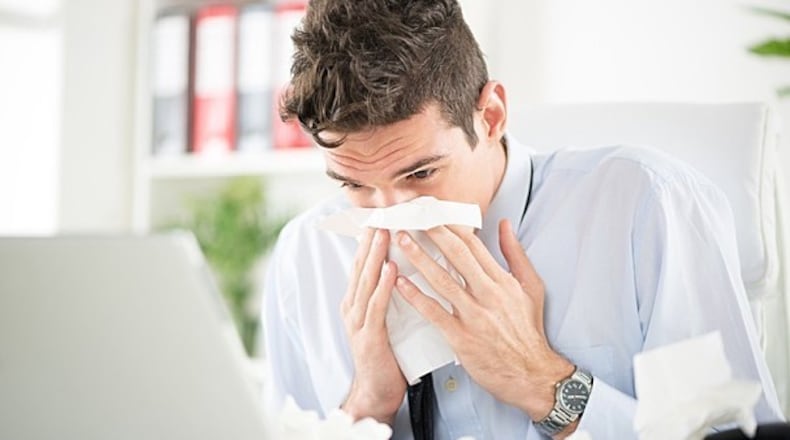Pale lips, a downward turn of the mouth and droopy eyelids are all subtle signs of illness that humans can spot at a glance, new research suggests.
» RELATED: What is the flu? 17 things to know about flu symptoms, flu shot side effects and more
The study, which was published this week in the academic journal "Proceedings of the Royal Society B", was conducted by researchers at Stockholm University. Scientists used human subjects, injecting them first with a placebo and then with molecules from E. coli, which rapidly trigger flu-like symptoms. Two hours after each injection, they were photographed.
The scientists showed the images to 62 participants who were asked to determine whether the individual was sick or healthy in each photograph. Although the participants were only able to recognize a sick individual 52 percent of the time, they correctly identified healthy individuals 70 percent of the time.
» RELATED: Is 'man flu' real? Men may suffer harsher flu symptoms than women, doctor says
"It is well-known that we judge a number of aspects of other people," John Axelsson, co-author of the study, told TIME. "It has been proposed that potential sickness is a threat that we react to, just like many others, although it is not as a strong as if someone looks very angry."
Axelsson further explained to The Guardian that humans "use a number of facial cues" to "judge the health in other people all the time." However, he also said individuals may be better judges of the facial cues when they are concerned about their own health or a partner.
"I think it depends a bit on the context you are in, on what you are sensitive for," he said.
» RELATED: Researchers say new drug could end the flu as we know it
But the researchers didn't stop with the first experiment. A new group of 60 participants were also shown the photographs. On average, they rated individuals as appearing more sick and more tired in photos taken after they were injected with E. coli.
Closer analysis revealed that paler skin and droopier eyelids were the most reliable indicators in judging a person's illness, while swollen face, redder eyes, less glossy and less patchy skin, a more drooping mouth and paler lips were also more noticeable in the photos of sick individuals, according to the participants responses.
» RELATED: This is what 12 Diet Cokes a day can do to your body, according to Atlanta nutritionists
"These results demonstrate that untrained people can, above chance level, identify acutely sick individuals from merely observing a photo for a few seconds," the researchers wrote in their published paper. "This supports the notion that humans have the ability to detect signs of illness in an early phase after exposure to infectious stimuli."
Other scientists have welcomed the research, while also noting some limitations to the study's results.
"I am surprised," psychologist David Perrett, a researcher at the University of St Andrews in Scotland who was not involved in the study, told The Washington Post.
No one had previously studied whether people can sense "experimentally induced sickness" by looking at faces, he said. "Sickness judgments turn out to be far more reliable" than other visual judgment such as, gauging someone's personality from a neutral expression.
Professor Ben Jones of the Face Research Lab at the University of Glasgow hailed the study as well.
» RELATED: This is what 12 Diet Cokes a day can do to your body, according to Atlanta nutritionists
"This study adds to growing evidence for the existence of facial cues associated with acute sickness and help us understand how, unfortunately, social stigmas about people suffering illnesses might emerge," he said.
At the same time, Dr. Carmen Lefevre of the center for behavior change at University College London cited concerns about the small sample size used in the research. Dr. Rachel McMullan of the Open University echoed those sentiments as well, suggesting the study should be replicated with a wider range of ethnic groups.
About the Author
Keep Reading
The Latest
Featured


